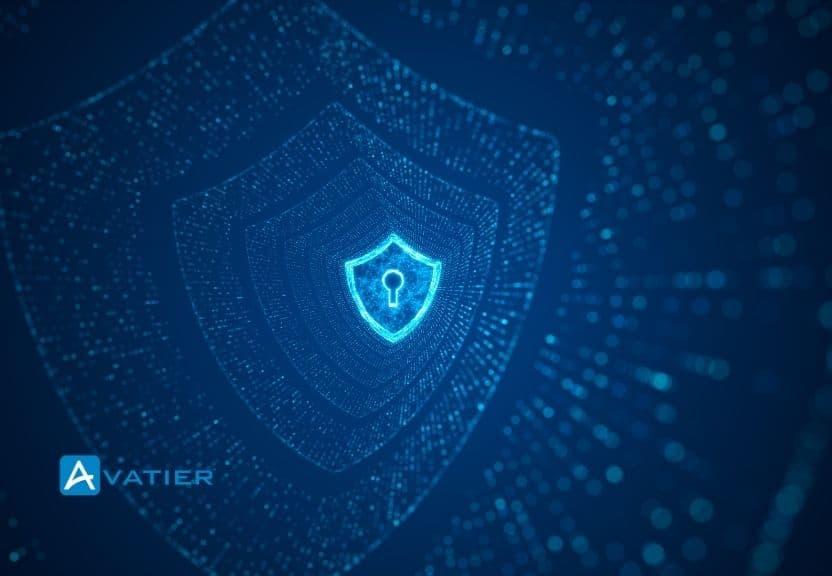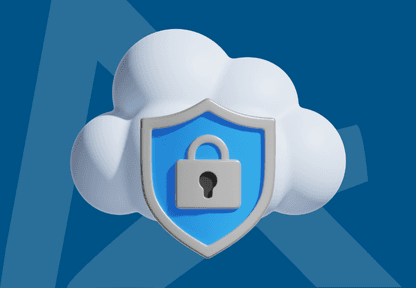October 21, 2025 • Mary Marshall
User Adoption: Why Security Tools Must Be Intuitive
Discover why intuitive security tools are essential for successful user adoption. Learn how Avatier’s IM solutions balance robust security

According to a recent study by Ponemon Institute, 69% of organizations report that employees bypass security measures that are too cumbersome or complex, creating significant security vulnerabilities despite substantial investments in defense technologies.
As we observe Cybersecurity Awareness Month, it’s the perfect time to examine why usability is not just a convenience factor but a fundamental security requirement. The most sophisticated security solutions offer little protection if employees find workarounds due to frustrating user experiences.
User Adoption: Why Security Tools Must Be Intuitive
When security tools are difficult to use, organizations face serious consequences:
-
Shadow IT proliferation: 80% of workers admit to using unapproved applications when corporate tools are too complex, according to a Gartner study.
-
Decreased productivity: Employees spend an average of 11 hours per year just dealing with password resets, according to Forrester Research.
-
Security bypasses: 42% of employees report using workarounds to security policies when those policies interfere with their ability to complete work tasks.
-
Increased support costs: Organizations spend approximately $70 per password reset ticket when help desk intervention is required.
These statistics paint a clear picture: security solutions that don’t prioritize user experience ultimately undermine the very protection they’re designed to provide.
The Psychology of User Adoption
Understanding why users resist security measures requires examining basic human psychology. People naturally follow the path of least resistance, especially when under pressure to complete work tasks. When security tools introduce friction, users make predictable choices that favor productivity over protection.
Security teams often fall victim to what’s known as the “curse of knowledge”—they understand why certain security measures are necessary, but fail to recognize how these measures appear to non-technical users who don’t share the same context or expertise.
Successful identity and access management solutions must account for these realities rather than fighting against them. As Nelson Cicchitto, CEO of Avatier, noted during the company’s Cybersecurity Awareness Month initiatives: “Cybersecurity is everyone’s responsibility, but it doesn’t have to be everyone’s burden. Our mission is to make securing identities simple, automated, and proactive.”
How Intuitive Design Enhances Security
Contrary to traditional thinking that sees security and usability as opposing forces, modern identity management recognizes that they’re complementary. When security tools are intuitive and user-friendly, several benefits emerge:
1. Improved Compliance Rates
When security processes align with natural workflow patterns, compliance increases dramatically. Avatier’s Identity Management Services incorporate human-centered design principles that encourage proper security behavior rather than forcing it. For example, self-service access request workflows that mimic familiar e-commerce experiences achieve compliance rates up to 87% higher than traditional ticketing systems.
2. Reduced Security Fatigue
“Security fatigue”—a documented condition where users become overwhelmed by security requirements—leads to poor decision-making. Intuitive tools reduce this cognitive burden by:
- Limiting unnecessary decisions
- Providing clear context for security actions
- Using consistent, predictable patterns
- Offering intelligent defaults
Avatier’s password management solutions, for instance, help overcome security fatigue by providing visual feedback on password strength and using simple, clear language for policy requirements.
3. Accelerated Zero Trust Adoption
Zero Trust security principles have become essential in today’s distributed workforce environments, but implementation often falters due to user resistance. Intuitive security tools can accelerate Zero Trust adoption by making continuous authentication and authorization transparent to users.
As organizations strengthen identity security, solutions that verify identities and enforce least-privilege access without creating friction become invaluable. This balance is particularly critical during the transition to Zero Trust architectures, where every access request is verified, yet users expect seamless experiences.
Key Elements of Intuitive Security Design
What makes a security tool genuinely intuitive? Several core design principles separate user-friendly security solutions from their frustrating counterparts:
Context-Aware Workflows
Security actions should occur within the context of normal work activities rather than forcing users to switch contexts. Avatier’s Identity Anywhere platform delivers security capabilities where users already work—in email, messaging platforms, or mobile devices—eliminating the need to navigate to separate security portals.
Intelligent Automation
Manual security processes inevitably create friction. Intelligent automation removes unnecessary user involvement while maintaining appropriate oversight. For example, automated provisioning workflows that adjust access rights based on role changes require minimal user intervention yet maintain strict security controls.
According to research from Enterprise Management Associates, organizations with highly automated identity management processes experience 67% fewer security incidents related to improper access.
Clear Communication and Feedback
Security tools often fail at their most basic function: clearly communicating what’s happening and why. Intuitive security solutions:
- Explain security requirements in plain language
- Provide immediate feedback when actions succeed or fail
- Offer guidance for resolving issues
- Use visual cues to indicate security status
Mobile-First Design
With mobile devices becoming the primary computing platform for many workers, security tools must deliver exceptional mobile experiences. Mobile-first design thinking creates interfaces that work well on smaller screens and limited input methods but scale gracefully to desktop environments.
Avatier’s commitment to mobile-first design has resulted in dramatically higher user adoption rates. Organizations implementing Avatier’s mobile identity management solutions report 62% higher user satisfaction compared to traditional web portal approaches.
Real-World Success: Balancing Security and Usability
The healthcare industry provides a compelling example of how balancing security and usability creates better outcomes. Healthcare organizations face strict compliance requirements under HIPAA while supporting clinical staff who need immediate access to patient information.
Traditional approaches to healthcare identity management often created significant friction for clinicians, leading to dangerous workarounds like shared login credentials. Avatier’s HIPAA-compliant identity management solutions take a different approach by integrating secure authentication methods directly into clinical workflows.
One major healthcare provider implementing this approach saw password policy compliance increase from 64% to 91% while reducing clinician complaints about security processes by 78%. The key was designing security that worked with clinical workflows rather than against them.
Implementing Security That Users Will Embrace
Organizations looking to improve security adoption should consider these practical steps:
1. Conduct User Experience Testing
Security tools often undergo extensive technical testing but minimal usability testing. Including actual end-users in the evaluation process reveals friction points that technical teams might miss. Testing should simulate real-world scenarios under realistic conditions rather than idealized laboratory settings.
2. Measure the Right Metrics
Many security teams track technical metrics (like password complexity or MFA enrollment) without measuring usability metrics that predict actual adoption:
- Time required to complete security tasks
- Error rates during security processes
- Help desk tickets related to security tools
- User satisfaction ratings for security processes
- Frequency of security bypasses or workarounds
3. Embrace Incremental Improvement
Perfect security that users avoid provides less protection than “good enough” security that’s consistently used. Successful identity management programs start with easily adopted measures and gradually introduce additional security as users become comfortable with the process.
4. Leverage AI for Adaptive Security
AI-driven security tools can adapt protection levels based on risk context, reducing friction for low-risk scenarios while increasing scrutiny for suspicious situations. This approach maintains strong security while minimizing unnecessary user interruptions.
During Cybersecurity Awareness Month, Avatier is highlighting how its AI Digital Workforce strengthens identity security while reducing user friction. This technology helps organizations “secure their world” by automating routine identity tasks, enabling passwordless authentication, and providing proactive protection against phishing, ransomware, and insider threats.
Conclusion: User Experience Is a Security Feature
This Cybersecurity Awareness Month, as we focus on ways to “Secure Our World,” remember that the most sophisticated security technology only delivers value when people actually use it as intended. Intuitive security design isn’t just about making tools easier to use—it’s about making security more effective at its fundamental purpose: protecting organizational assets.
By prioritizing user experience in security implementations, organizations don’t just make users happier—they make their entire security infrastructure stronger, more resilient, and better prepared to face evolving threats.
For more insights on enhancing your security posture during Cybersecurity Awareness Month, visit Avatier’s Cybersecurity Awareness resources.









